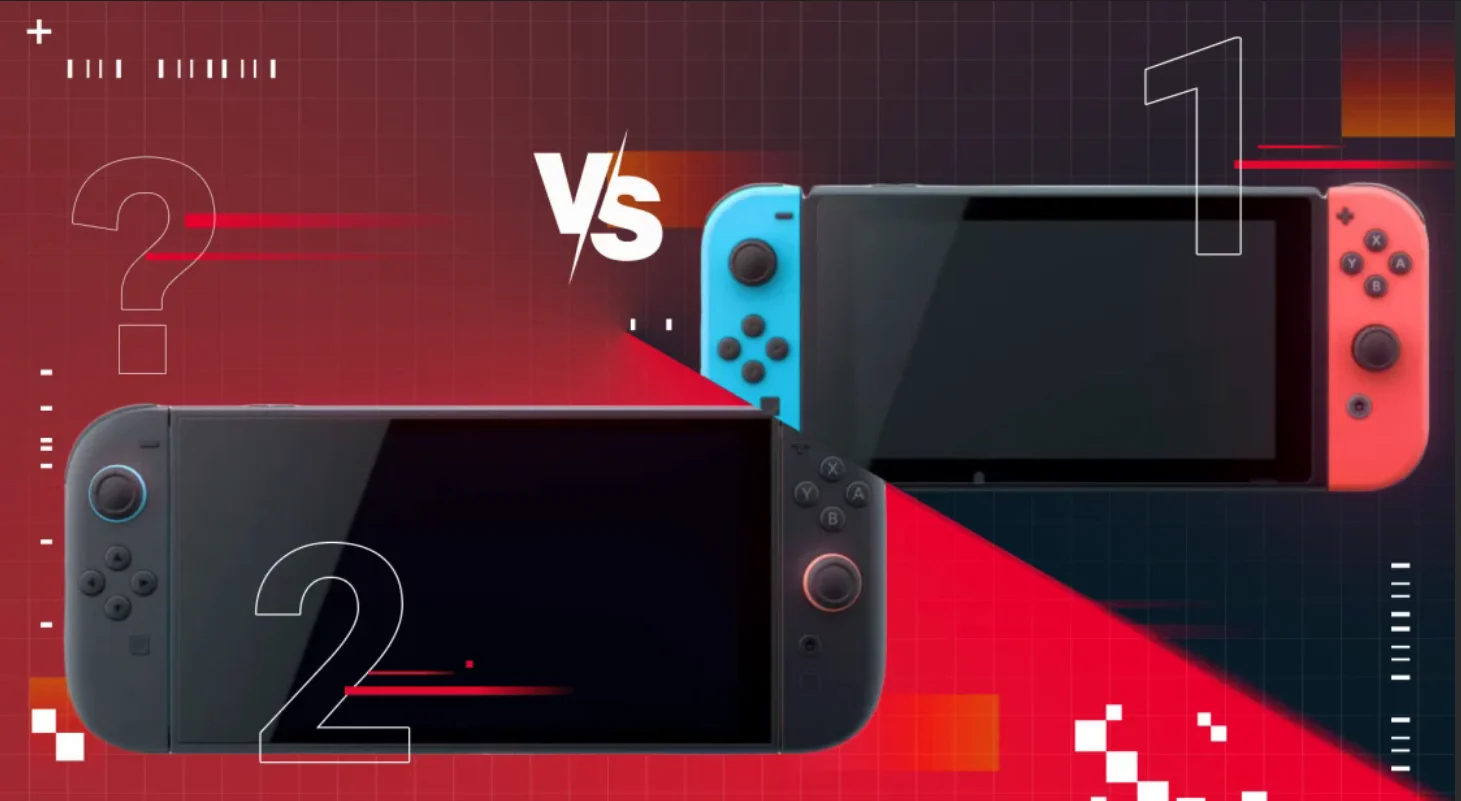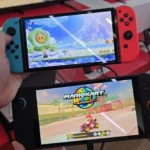Contacta con Boss
No te apresures a cerrarlo, habla directamente con nuestro jefe, recibirás una sorpresa.



Más de 1900 usuarios
Servicios de usuario completados

Desde el Nintendo Switch (en adelante, Switch 1) se lanzó en 2017 y logró un gran éxito en todo el mundo gracias a su diseño híbrido único que combina una consola portátil y una consola doméstica.
En junio de este año, Nintendo lanzó la nueva Switch 2. ¿Continuará esta nueva consola el éxito de la Switch 1? ¿Qué mejoras y cambios incluye?
¿Qué es verdad y qué es falso acerca de todo esto? Rumores y filtraciones de Switch 2 ¿durante el año pasado?
Este artículo comparará el Switch 1 y el Switch 2 en términos de hardware, rendimiento, experiencia de juego y otros aspectos.

En lugar de subvertir por completo las reglas de diseño como las consolas anteriores de Nintendo, la Switch 2 se centra en actualizaciones evolutivas iterativas.
Aun así, la próxima consola de próxima generación se diferenciará de su predecesora en términos de actualizaciones de hardware, nuevas funciones para el usuario, estrategias de precios y más.
La pantalla de la Switch 2 incorpora varias mejoras. El tamaño de la pantalla es significativamente mayor, pasando de las 6,2 pulgadas de la Switch 1 a 7,9 pulgadas.
El Switch 1 tiene una resolución de salida máxima de 720p en la pantalla, mientras que el Switch 2 admitirá una salida de 1080p y afirma admitir VRR (frecuencia de actualización variable) y una experiencia de juego de 120 cuadros.
En los últimos años, los jugadores se han acostumbrado al diseño del riel deslizante Joy-Con del Switch 1, pero el Switch 2 revolucionará eso.
El Joy-Con de la Switch 1 se conecta a la consola mediante un riel lateral, mientras que el de la Switch 2 se fija magnéticamente. Mantén pulsado el nuevo botón cerca del gatillo al retirarlo.
Nintendo garantiza que el mando magnético no se caerá por sí solo.
Esta es otra mejora importante del controlador Joy-Con del Switch 2, que se ha mencionado varias veces en filtraciones anteriores.
El nuevo controlador tiene un sensor en el lateral, por lo que puedes colocar el Joy-Con horizontalmente sobre una superficie plana y usarlo como un mouse.
El Switch 1 admite tres modos: modo consola, modo mainframe y modo escritorio, mientras que el Switch 2 agregará un “modo mouse”.
Switch 2 introduce una nueva característica importante: la tecla C, que está vinculada a GameChat.
Presione esta tecla para abrir el menú de chat, que permite a los jugadores realizar llamadas de voz o video durante el juego (se requieren accesorios externos).
Lamentablemente, una vez finalizado el período de prueba gratuito, GameChat solo estará disponible para los suscriptores de Nintendo Membership (NSO).
Nintendo también ha realizado otras mejoras en los Joy-Con del Switch 2.
Los botones SL/SR del Switch 1 han sido criticados por ser demasiado pequeños, y el Switch 2 amplía ligeramente el área de estos dos botones.
El Switch 2 tiene un joystick más grande y una promesa oficial de mejorar significativamente el muy criticado problema de “desplazamiento del joystick” del original.
Switch 2 tiene un nuevo controlador Pro, cuyos cambios principales son la incorporación de un botón C y un puerto de audio de 3,5 mm (una falla importante en el controlador Pro original).
Además, al mango se le añade el botón GL/GR con funciones personalizables.
En términos de especificaciones técnicas, el Switch 2 será el mayor salto generacional de Nintendo desde el GameCube.
La Switch 2 cambiará por completo la situación, aunque el hardware de la Switch 1 ya estaba obsoleto cuando se lanzó en 2017.
La consola admite una resolución de salida de 4K, lo que era completamente imposible con el original.
Los rumores sobre el uso de la tecnología DLSS de Nvidia en Switch 2 han estado circulando durante años (incluso se vinculó originalmente con el rumoreado "Switch Pro"), pero ahora finalmente se ha confirmado oficialmente.
Dado que sus especificaciones de hardware son incluso inferiores a las de la Xbox Series S, el DLSS es clave para alcanzar el 4K. Además, la Switch 2 también es compatible con el trazado de rayos.
La mejora de la Switch 2 no se limita al rendimiento visual. En cuanto al audio, además de un mayor volumen y altavoces de mayor calidad, la Switch2 admite efectos de sonido 3D tanto en modo consola como en modo portátil.
La potencia de la nueva consola no solo se traducirá en mejores gráficos, sino que también beneficiará a los juegos de Switch existentes. Si bien el plan exacto depende de la editorial, algunos títulos se lanzarán como "Edición Nintendo Switch 2", optimizados para Switch 2, con distintas mejoras en la calidad de imagen y el precio.
El espacio de almacenamiento integrado del Switch 2 se ha mejorado enormemente: de 32 GB en el Switch 1 a 256 GB (aunque los juegos del Switch 2 también serán más grandes).
En términos de expansión de almacenamiento, el host ya no admite tarjetas microSD comunes, sino que necesita utilizar nuevas tarjetas microSD Express.
La Switch 1 tendrá una duración de batería completa de 4 a 10 horas (según el uso), mientras que la Switch 2 tendrá una duración de batería completa de 2 a 6,5 horas. En cuanto al tiempo de carga, la estimación oficial es de 3 horas, prácticamente igual que la primera generación.
La base del Switch 2 mide 4,5 pulgadas de alto, 7,9 pulgadas de ancho y 2 pulgadas de grosor, un poco más grande que la base original (4,1 pulgadas de alto, 6,8 pulgadas de ancho y 2,12 pulgadas de grosor).
Además, la nueva base dispone de una interfaz Ethernet para facilitar la conexión directa de cables de red.
El esperado juego de NGC finalmente se agregará a la biblioteca de juegos de Nintendo Membership (NSO) el 5 de junio, pero solo para usuarios de Switch 2.
La “Membresía Premium” original de Switch incluye juegos de NES, SNES, N64, MD, GB/GBC/GBA, mientras que la membresía de Switch 2 también incluirá juegos de NGC.
La primera alineación incluye Zelda: Wind Waker, Soul Ability 2, F-Zero GX, seguido de Luigi Mansion, Mario Sun, Pokémon XD: Dark Cyclone y otros.
Switch 2 tiene mejoras significativas en cuanto a hardware, pantalla, rendimiento, etc., especialmente un procesador más potente, mayor resolución, mejor experiencia de juego, etc.
Para aquellos que aún no han comprado el Switch 1, el Switch 2 es una mejor opción.
Para aquellos que ya poseen el Switch 1, la actualización dependerá de cuánto contenido exclusivo y experiencia mejorada pueda ofrecer el nuevo modelo.
En general, se espera que el Switch 2, como sucesor del Switch 1, siga siendo un jugador importante en el mercado de los videojuegos gracias a su mayor rendimiento de hardware y posible compatibilidad con 4K.